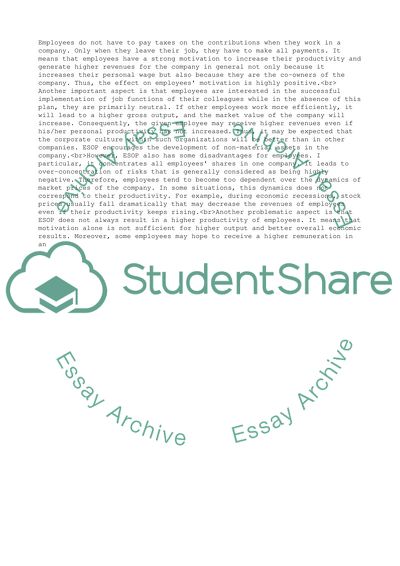Cite this document
(“The Effectiveness of Employee Stock Ownership Plans Essay”, n.d.)
The Effectiveness of Employee Stock Ownership Plans Essay. Retrieved from https://studentshare.org/management/1652650-the-effectiveness-of-employee-stock-ownership-plans
The Effectiveness of Employee Stock Ownership Plans Essay. Retrieved from https://studentshare.org/management/1652650-the-effectiveness-of-employee-stock-ownership-plans
(The Effectiveness of Employee Stock Ownership Plans Essay)
The Effectiveness of Employee Stock Ownership Plans Essay. https://studentshare.org/management/1652650-the-effectiveness-of-employee-stock-ownership-plans.
The Effectiveness of Employee Stock Ownership Plans Essay. https://studentshare.org/management/1652650-the-effectiveness-of-employee-stock-ownership-plans.
“The Effectiveness of Employee Stock Ownership Plans Essay”, n.d. https://studentshare.org/management/1652650-the-effectiveness-of-employee-stock-ownership-plans.


